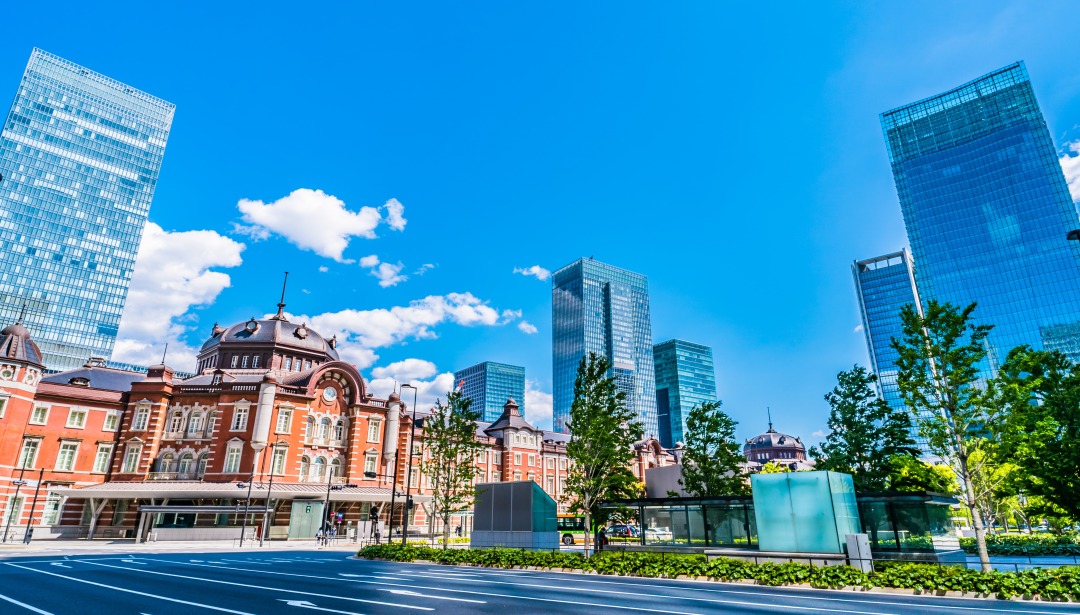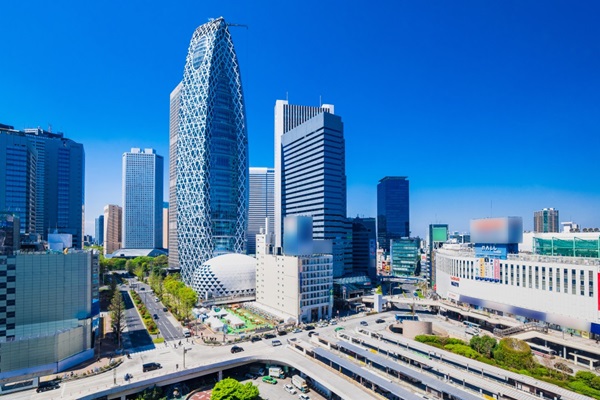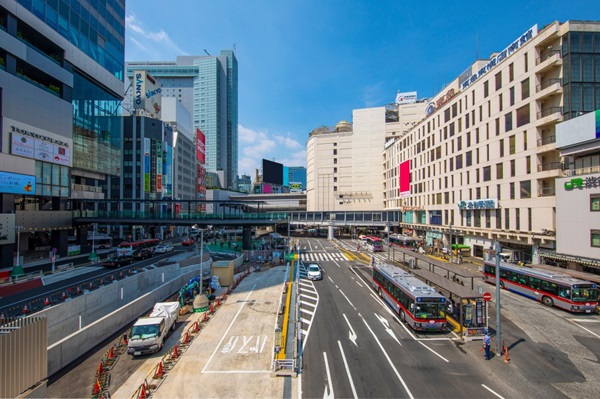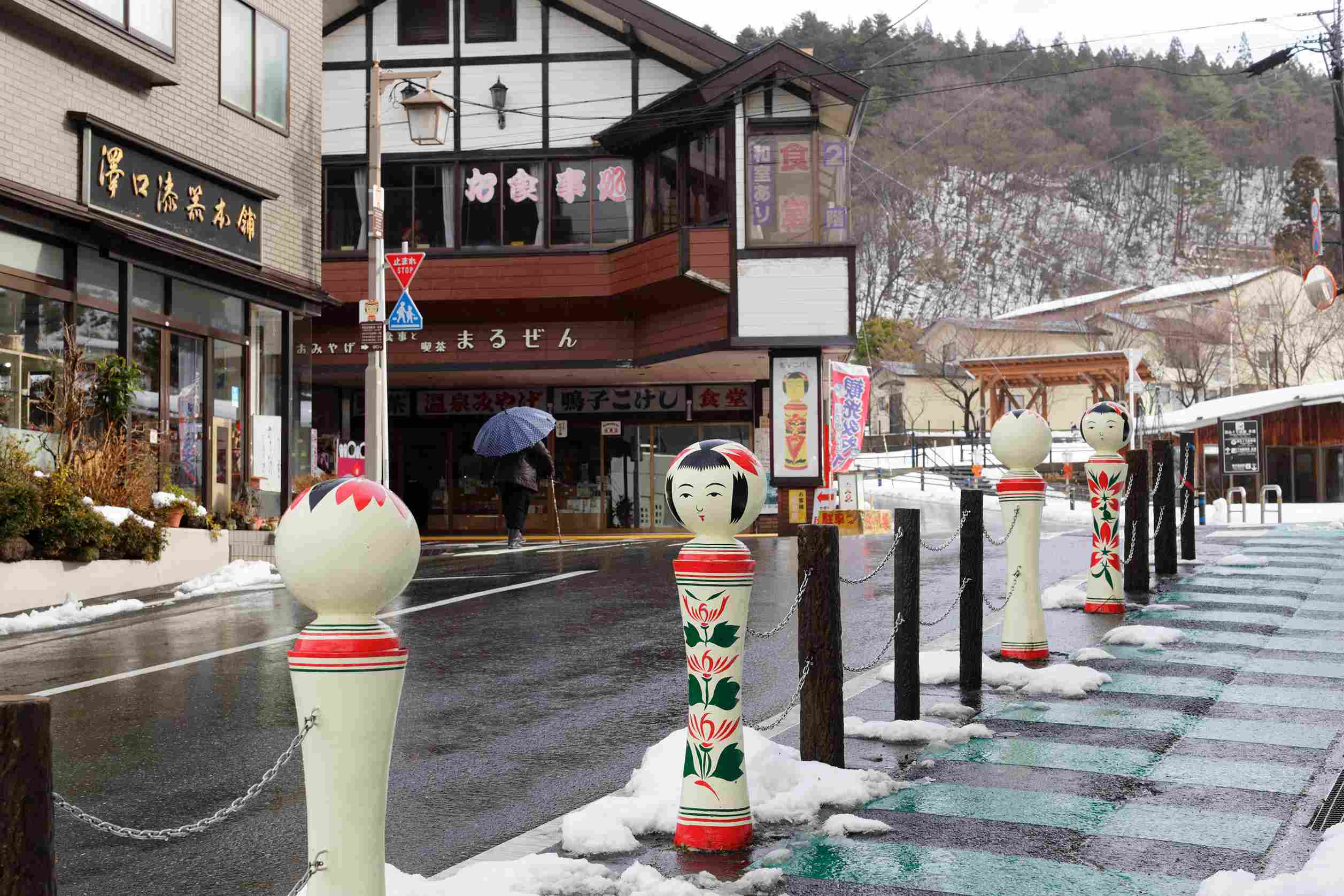When asked what comes to your mind when you hear Tokyo Station, what do you think of?
The charm of Tokyo Station, with its distinctive red brick station building and being surrounded by many skyscrapers, is the central station in Japan, and so on.
This time, we will introduce basic information about Tokyo Station, the ease of living in the surrounding area, its history and outlook, and recommended spots.
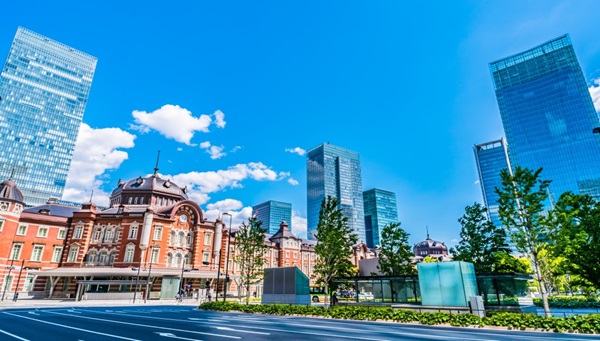
Basic information about Tokyo Station, which has a distinctive red brick structure
Tokyo Station is a large terminal station located in Marunouchi, Chiyoda Ward, Tokyo.
When you think of Tokyo Station, you probably think of the red brick station building. Brick station buildings are rare in Japan in the Reiwa era, and are culturally unique.
There was once a plan to turn Tokyo Station into a high-rise building, but the brick station building has been inherited from the time Tokyo Station was completed in 1914 (Taisho 13) to the present day.
In addition, the average number of passengers per day at Tokyo Station in 2021 was 565,276, making it the fourth largest number among JR East stations.
Source: Ministry of Land, Infrastructure, Transport and Tourism National Land Numerical Information Download Site “ Data on the number of passengers getting on and off by station ”
Source: Statistical Information Research “ Statistics on the number of passengers getting on and off at Tokyo Station (JR East) ”
The average congestion level at Tokyo Station per weekday is as follows.
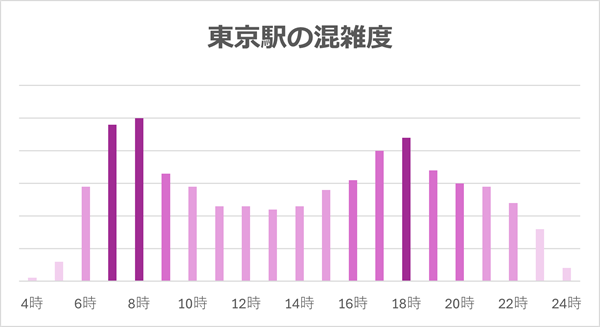
*Created independently by processing from JR East official website “Station congestion situation” and NAVITIME “Crowd forecast”
*Classified into four levels of congestion based on the numbers on the vertical axis. Very crowded (200-250), crowded (150-200), not very crowded (100-150), empty (0-100)
Route to Tokyo Station
Tokyo Station has a total of 30 platforms, including the Tokaido Shinkansen and Tokyo Metro (as of January 1, 2020). You can imagine the scale of Tokyo Station when you compare it to the fact that a typical local city station has about 2 to 4 platforms.
Tokyo Station is served by the following 15 lines:
JR East
● Keiyo Line/Musashino Line
● Sobu Line Rapid
● Chuo Line Rapid
● Tokaido Line (Ueno Tokyo Line, Utsunomiya Line/Takasaki Line, Joban Line)
● Yamanote Line
● Yokosuka Line
● Keihin Tohoku Line/Negishi Line
● Narita Express
● Tohoku/Hokkaido Shinkansen
● Akita Shinkansen
● Yamagata Shinkansen
● Joetsu Shinkansen
● Hokuriku Shinkansen
JR Tokai
● Tokaido/Sanyo Shinkansen
Subway
● Tokyo Metro Marunouchi Line
Using these lines, you can access Choshi (Chiba) in the east, Hakata (Fukuoka) in the west, Kamakura and Yokosuka (Kanagawa) in the south, and Shin-Hakodate-Hokuto (Hokkaido) in the north in a straight line.
Furthermore, Nijubashi-mae Station and Otemachi Station each have direct underground passages to Tokyo Station, and are about 10 minutes walk away. This allows you to use the Tokyo Metro Chiyoda Line, Tozai Line, Hanzomon Line, and Toei Mita Line, making it easy to transfer even on rainy days.
There are also Nihonbashi Station, Kyobashi Station, and Yurakucho Station within a 15-minute walk from Tokyo Station, making it easy to use lines such as the Tokyo Metro Ginza Line and Yurakucho Line.
Access from Tokyo Station to major stations and airports
We will introduce the main access methods from Tokyo Station to major stations and airports, as well as the travel times.
● Shinjuku Station : 4 stations on the JR Chuo Line (towards Takao)
● Shibuya Station : 7 stations on the JR Yamanote Line (outer loop)
● Ikebukuro Station : 8 stations (approx. 20) on the Tokyo Metro Marunouchi Line (towards Ikebukuro)
● Haneda Airport (Terminal 2) : Transfer at Hamamatsucho Station on the JR Yamanote Line (outer loop) or JR Keihin-Tohoku Line (bound for Ofuna), then take the Tokyo Monorail (bound for Haneda Airport/Airport Rapid) for 3 stations (Haneda Airport Terminal 2 Station) )
● Narita Airport (Terminal 1) : 3 stations (Narita Airport Station) on the Narita Express (limited express for Narita Airport)
Sightseeing spots that can be accessed directly from Tokyo Station
When using the Shinkansen from Tokyo Station, you can directly access the following regions.
Tokaido/Sanyo Shinkansen
● Atami
● Nagoya
● Kyoto
● Shin-Osaka
● Hiroshima
● Hakata
Tohoku/Hokkaido Shinkansen
● Sendai
● Shin Hakodate Hokuto
Joetsu Shinkansen/Hokuriku Shinkansen
● Karuizawa
● Kanazawa
● Fukui
If you take the conventional train lines, you can also access the following spots directly.
● Maihama (JR Keiyo Line)
● Kamakura (JR Yokosuka Line)
● Utsunomiya (JR Ueno Tokyo Line)
● Kofu (JR Chuo Line Limited Express Kaiji/Azusa)
● Matsumoto (JR Chuo Line Limited Express Azusa)
● Izumo City (Sunrise Izumo)
● Takamatsu (Sunrise Seto)
The express bus terminal (Bus Terminal Tokyo Yaesu), which is directly connected to Tokyo Station, also has express buses departing from and arriving at various destinations from Tohoku to Kyushu.
Tokyo Station is a key point in Japan's transportation network, offering highly convenient access to all parts of the country.
The charm of the Tokyo Station area, which has two faces: “Marunouchi” and “Yaesu”
The area around Tokyo Station is broadly divided into the Marunouchi area on the west side and the Yaesu area on the east side. Both areas have in common that they are Tokyo's leading office districts, but the Marunouchi area has many natural areas such as the Imperial Palace, Hibiya Park, and Wadakura Fountain Park that blend in with the office buildings. The Yaesu area has a downtown atmosphere as it is close to Nihonbashi and Mitsukoshi-mae, but in recent years the area has undergone redevelopment and is lined with many advanced buildings.
In addition, as of January 1, 2024, the number of foreign residents in the areas around Tokyo Station is 3,858 in Chiyoda Ward, 10,370 in Chuo Ward, and 21,278 in Minato Ward (Source: Tokyo Metropolitan Government Statistics " Table 1 by City, Town and Village") Foreign population by nationality/region (top 10 countries/regions) .
In particular, Minato Ward is home to over 20,000 foreigners, with over 120 different nationalities. One of the reasons for this is that there are many embassies . It turns out that there are a certain number of foreigners living in Chiyoda Ward and Chuo Ward as well.
Tokyo Station, which is built on such an area, has access to all parts of the country, and is also characterized by being easy to access from all over the country. As a result, logistics from all over the country are flourishing, making it easy for restaurants from all over the area to gather around Tokyo Station. Being able to enjoy various gourmet foods from around the world, including Japanese food, is one of the factors that makes foreigners want to live here.
The red brick station building, which was partially lost, has been revived and continues to evolve
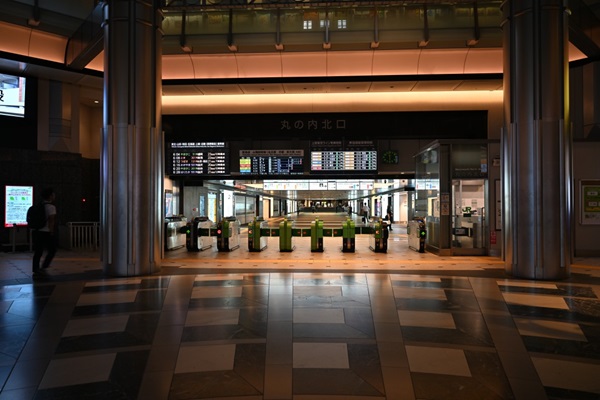
Tokyo Station opened in December 1914. Initially, it was a three-story brick station building. The red brick station building was designed by Kingo Tatsuno, a pioneer of modern Japanese architecture. It is said that over 900,000 red bricks were used to finish the exterior walls.
In 1945, the roof of the station building was destroyed by air raids during World War II. In 1947, the third floor that had been lost in the air raids was removed and the station was restarted as a two-story station building.
Later, it became the starting station for the Tokaido Shinkansen, which opened in time for the 1964 Tokyo Olympics.
In 2003 , Tokyo Station was designated as a nationally important cultural property under the official name ``Tokyo Station Marunouchi Bookstore'' (*) (Source: Agency for Cultural Affairs' `` Nationally Designated Cultural Properties Database '').
*In here, “Bookstore” means “main building”
From 2007 to 2012, station building preservation and restoration work was carried out, including the restoration of the burnt sections. The existing station building was preserved as much as possible, and the lost third floor and other parts were restored to their original appearance at the time of opening. Extensive seismic retrofitting was implemented underground, making the station building more robust while reviving its historical appearance.
Although Tokyo Station celebrated its 100th anniversary in 2014, the area around Tokyo Station continues to evolve.
Torch Tower, scheduled to be completed in 2028, will be home to offices, hotels, commercial facilities, and observation facilities, and will shine as a new landmark. If this type of redevelopment progresses, the area around Tokyo Station can be expected to become even more vibrant.
You can eat, enjoy, and refresh inside Tokyo Station
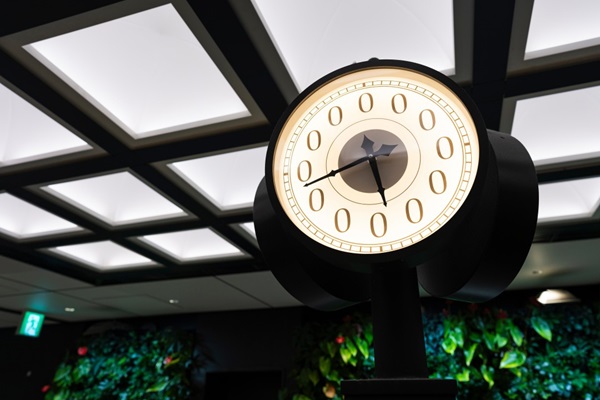
There are plenty of "ekinaka" (*) spots inside Tokyo Station where you can eat, enjoy, and refresh all at once. Here we will introduce three facilities located in the ekinaka area of Tokyo Station.
*The term refers to a shopping arcade or district installed within the premises of a train station. Particularly, it is attractive when located within the ticket gates, enabling access without having to exit through them.
Gransta is a large-scale commercial facility located under Tokyo Station.
There are a variety of restaurants that can be used for various occasions such as breakfast, lunch, teatime, dinner, and bar time. We offer takeout gourmet food that allows you to easily enjoy the flavors of famous restaurants, as well as ekiben that can only be purchased at Tokyo Station.
One of Gransta's restaurants, ``Station Restaurant The Central,'' has a ``dining car'' theme where you can enjoy meals while riding the train. It is a reproduction of the JR dining cars that once ran throughout Japan, and its unique feature is that you can enjoy the feeling of eating on a train while still being at Tokyo Station.
With over 80 years of history dating back to the days of dining cars, you can enjoy nostalgic yet new and carefully selected Western cuisine, including the signature menu ``Traditional Hayashi Rice'', which pairs perfectly with melty stewed beef tendon and demi-glace sauce.
Tokyo Station Ichibangai, a shopping spot where you can fully enjoy Japanese characters and sweets
Tokyo Station Ichibangai is where you can enjoy the unique culture of Japan all at once.
Tokyo Character Street is home to character shops that are popular both in Japan and around the world, such as Pokemon shops and Hello Kitty shops. Tokyo Okashi Land is lined with antenna shops of famous sweets manufacturers such as Morinaga & Co. and Calbee. Both areas sell limited edition products that can only be purchased at Tokyo Station.
Taking advantage of Tokyo Station's characteristics of attracting people from all over the world, it is a spot where a variety of companies and stores promote their attractions.
Tokyo Station Ichibangai official website
Yaechika, a shopping mall with the largest floor area in Tokyo
Yaechika (Yaesu Underground Mall), which is directly connected to the Yaesu Underground Central Exit, is one of the largest shopping malls in Japan located under the Yaesu Exit. There are also drug stores and fast fashion shops, making it an easy place to purchase daily necessities.
The four rest spaces at Yaechika will undergo major renovations in December 2023. Here, environmentally friendly materials such as recycled ceramic tiles are used.
In addition, the stores located in Yaechika are implementing initiatives that are conscious of the SDGs, such as collecting clothing and providing environmentally friendly cutlery.
There are spots around Tokyo Station where tradition and innovation blend seamlessly.
We will introduce 5 recommended spots around Tokyo Station. The spots introduced here are spots that can be used in a variety of situations, such as going out on a holiday, returning from work, or taking a walk.
Shinmaru Building is a multipurpose high-rise building containing offices and commercial facilities. The restaurant floor has restaurants and bars from all over the world, as well as Japanese restaurants that are popular all over Japan, especially in Tokyo.
At 'Kappo Dining Harii' on the 5th floor, you can enjoy Japanese cuisine made with seasonal ingredients such as premium fresh fish directly delivered from the Miura Peninsula (Kanagawa) and game meat and mountain vegetables directly delivered from Shinshu (Nagano)."
Katsukichi, also located on the 5th floor, is a tonkatsu restaurant founded in Suidobashi in 1958, and the Shinmaru Building store opened in 2007. When you enter the store, you will be greeted by approximately 500 traditional Saga Imari ware "soba choko" (*) at the front. In a modern high-rise building, you can enjoy tonkatsu made with the highest quality pork from Iwate.
*A container for dipping soba noodles in soup.
In addition, every Friday in the underground passageway of the Shinmaru Building, a marche is held featuring fresh ingredients gathered from all over the country. It's a spot where you can casually stop by on your way home from work and enjoy a casual marche in the center of Tokyo.
Shinmaru Building official website
“KITTE Marunouchi”, a gourmet and shopping spot that utilizes a post office building
KITTE Marunouchi is a combination of part of the former Tokyo Central Post Office building and a new building. It features a glass ceiling surrounded by preserved and newly built parts, and the interior design was by famous architect Kengo Kuma.
Each floor is lined with restaurants where you can enjoy local gourmet food from all over Japan, as well as merchandise shops full of aesthetics unique to Japan. It is a perfect spot for sightseeing and holidays, as people, cities, and eras intersect, and you can experience Japanese culture while feeling history.
KITTE Marunouchi official website
Tokyo Midtown Yaesu is a new commercial complex in the Yaesu area that opened in March 2023. It is a spot where you can fully enjoy Japanese culture, with many Japanese foods and famous brand shops that are the first of their kind in Japan.
On the first floor is EN VEDETTE LUXE, a sweets shop run by a popular patisserie in Kiyosumi-Shirakawa, Tokyo. There is also an eat-in space, and the atmosphere is comfortable for even solo customers. In addition to a wide variety of luxurious cakes, you can also enjoy ice cream and parfaits exclusive to the store.
On the third floor is MOTO TOKYO, where you can enjoy pairing a wide variety of sake with carefully selected Japanese food. This is a sake bar that was born from the desire to convey the wonders of Japanese culture through sake and dishes made with seasonal ingredients. There is a standing bar where you can casually enjoy sake, as well as counter seats and private rooms where you can enjoy your food in a leisurely manner, which can be used to suit any occasion.
Tokyo Midtown Yaesu official website
``Marunouchi Nakadori'' is a stylish street in the business district where you can enjoy lunch and teatime
Marunouchi Nakadori is the main street in Marunouchi that connects near Hibiya Station to Tokyo Station. The streets are lined with famous brand shops, stylish restaurants, and cafes.
The trees along the street are also unique in that you can enjoy different scenery depending on the season, such as autumn leaves or illuminations. Walking down the street of a sophisticated city is sure to thrill you. You could also enjoy taking a walk from Tokyo Station and taking a break at a cafe.
Marunouchi Nakadori official website
Wadakura Fountain Park, which can also be utilized as a resting spot for cherry blossom viewing or after a stroll.
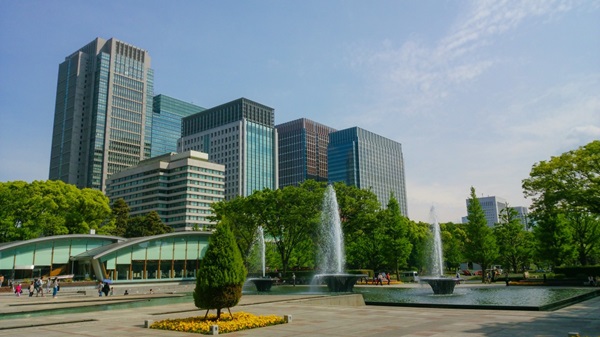
Wadakura Fountain Park is a place for people to relax within the Imperial Palace Gardens. There are several fountains, including the symbolic large fountain created to commemorate the marriage of His Majesty the Emperor.
It is a space where you can enjoy the harmony of advanced skyscrapers in the city and nature, making it the perfect spot for a walk and refreshment. During the spring cherry blossom season, it is also recommended as a resting spot after enjoying cherry blossom viewing around the Imperial Palace.
Wadakura Fountain Park official website
From red brick production areas to landscape stamps! Unknown trivia about Tokyo Station

Finally, we'll introduce some trivia about Tokyo Station that will help you enjoy the place even more.
Production area of the bricks used in the Marunouchi station building
The red brick station building has been a symbol of Tokyo Station since its opening. The bricks used for the station building are from Fukaya City, Saitama Prefecture. Why are bricks from Fukaya City used?
In 1887, Japan's first mechanical brick factory was established in Fukaya City. This factory was built with the cooperation of Eiichi Shibusawa and others.
After the factory was established, efforts were put into brick production, and the bricks made at this factory were used one after another in the modern buildings of the time. One such example is the fact that bricks produced in Fukaya City were used in Tokyo Station, which was being built at the time.
In the Marunouchi area, building heights were once restricted to 100 shaku (approximately 31 meters) due to landscape district regulations around the Imperial Palace. This regulation was established to preserve the diverse landscape surrounding Chiyoda Ward, which includes the rich greenery of the Imperial Palace, waterfronts such as moats and rivers, and historic buildings from the modern era such as Tokyo Station and the National Diet Building.
After the war, this height restriction was abolished and replaced with floor area ratio (*) regulations.
*Ratio of the total floor area of the building to the area of the site
It can be said that the Marunouchi area has achieved high-rise urbanization while inheriting historical architecture.
The secret of the postbox inside Tokyo Station
When you drop your mail into the mailbox near the Marunouchi Central Exit inside Tokyo Station, a different phenomenon occurs than with other mailboxes.
You can have the landscape stamp (local postmark) with the Tokyo Station motif stamped on the mail collected from this postbox. Why not send it on special letters or to friends?
Summary
Tokyo Station will celebrate its 110th anniversary in December 2024. Along with its long history, the area around Tokyo Station continues to change.
Tokyo Station is a very convenient station to go to anywhere in Japan as it is connected to lines that go all over Japan. In addition, there are various spots in and around Tokyo Station where you can experience Japanese culture, and the fact that it is easy to find everything you need for daily life is a big advantage.
If you are considering purchasing real estate near Tokyo Station, please refer to the ease of living around Tokyo Station introduced in this article.


